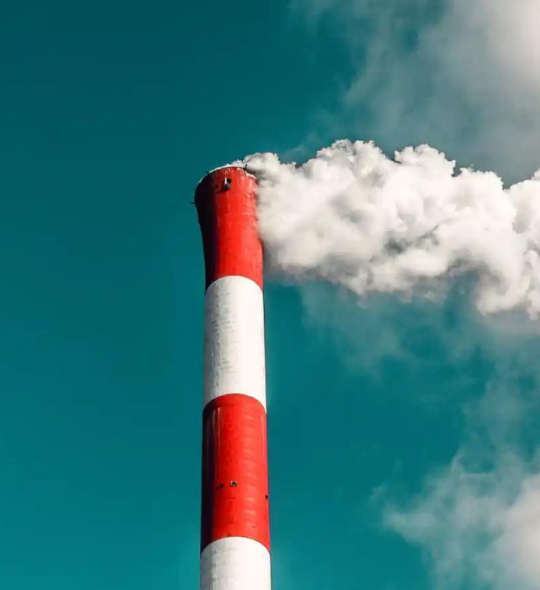
What are the differences between carbon taxes and cap & trade programs?
TL;DR
-
Carbon taxes set a price on emissions, which in turn sets a limit on the level of emissions, while a cap & trade system sets a limit on emissions which sets the price of emissions.
-
Carbon taxes and cap & trade are not mutually exclusive and be used in tandem in different economic sectors alongside other programs.
-
Carbon pricing revenue can be used to pay for a wide range of measures, including rebates, green energy generation, deficit reduction, or employee transition assistance, among others.
April is tax season, and one kind of tax has increasingly been on people’s minds – carbon taxes. Carbon taxes and emissions trading systems (also known as cap and trade programs) are two ways to put a price on carbon, but what’s the difference and how do they work?
Let’s take a look together at the key elements of each approach. Right off the bat, it’s important to note that carbon taxes and cap & trade are not mutually exclusive, although one option may be more popular in certain regions due to local political and economic considerations.
From an economic standpoint, both carbon taxes and cap & trade systems function in equivalent ways; the former sets the price of emissions which in turn dictates the level of emissions; the latter sets the limit of emissions which dictates the price of emissions.
Both options put a price on emissions, which are a negative externality (a detrimental by-product that impacts an unrelated third party, i.e the general population), thereby factoring in the social cost of pollution.
“Carbon pricing reflects the costs of production and consumption choices and prompts emitters to change their behaviour.”
According to the World Bank, in 2020 there were 64 carbon pricing programs implemented (or scheduled to be implemented) around the world at the regional, national, and subnational levels. In total, these programs encompass 12 gigatonnes of CO2e or 22.3% of global emissions.
While the United States has not set a price on carbon, several US states have done so, and the American Petroleum Institute has expressed its support for “[…] sensible legislation that prices carbon across all economic sectors while avoiding regulatory duplication.” The Biden administration has so far been non-committal regarding carbon pricing.
Carbon Tax
Carbon taxes put a set price on each tonne of CO2e, which forces emitters to pay a fee for each tonne that they emit. Carbon taxes can be levied against certain sectors or the whole economy, and they penalize large emitters while rewarding (through lower tax obligations) those actors that reduce their emissions.
A regular increase in carbon taxes, above and beyond the rate of inflation, is an effective way to ensure reduced emissions over the long term. For example, Canada’s carbon tax is set to increase by C$10 annually until 2022, and then C$15 per year until it reaches C$170 ($135) per tonne by 2030.
Cap & Trade
Emissions trading systems (ETS) – or cap & trade systems – set limits to the amount of CO2e that can be emitted either by part of or the entire economy each year.
These systems then issue allowances, or permits to emitters that allow them to emit a certain amount of carbon. For example, if the annual cap (or limit) is 10,000 tonnes of CO2e, then 10,000 one tonne allowances are issued. Emitters must acquire enough allowances to cover the amount of CO2e that they emit. These allowances can either be allocated by a regulatory body or offered in an auction, with emitters bidding on said allowances.
This auction process determines the price of allowances based on supply and demand – the more emitters (and subsequently higher emissions), the more competition for allowances, the higher the price becomes.
Emitters are able to sell and trade allowances to others, which enables actors with lower emissions to profit from a) selling excess allowances, and b) from not having to buy as many allowances to cover their operations in the first place. This in turn incentivizes emitters to reduce their carbon footprint, as does lowering the cap (and thereby number of allowances in circulation) each year.
Hybrid systems
As we have already mentioned, ETS and carbon taxes are not mutually exclusive, and there are several hybrid options that jurisdictions can adopt.
For example, a region could choose to implement a carbon pricing mechanism but include limits (a floor and ceiling price) on how much those prices can fluctuate. Another option is to implement an ETS for certain sectors and a carbon tax for others.
Both pricing options complement other emissions reduction efforts, such as: gas taxes, vehicle emission standards, and severance payments for coal mining and oil or gas drilling (among others) all help to indirectly put a price on carbon.
“From an economic standpoint, both carbon taxes and cap & trade systems function in equivalent ways; the former sets the price of emissions which in turn dictates the level of emissions; the latter sets the limit of emissions which dictates the price of emissions.”
Revenue from either pricing approach can be substantial. For example, according to the Tax Policy Center a hypothetical US carbon tax beginning in 2017 and levied at $25 per ton and increased annually by the rate of inflation plus two percent would generate $1 trillion over 10 years. In Canada, Ottawa garnered C$2.81 billion ($2.12 billion) during 2019/2020 at a per tonne price of C$20 ($15.8).
Revenue from carbon pricing programs can be returned to citizens via rebates, with an emphasis on offsetting energy costs for low-income households. Funds can also be allocated to provide transition assistance to workers and communities reliant on the fossil fuel economy.
Revenue can be used to: pay down the deficit, allow cuts in other taxes, invest in climate resilience and infrastructure; invest in clean energy, vehicles, fuels, and transit.




